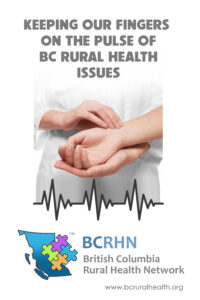Gaps in health care for LGBTQ2S+ communities are hard to solve if you don’t measure them, report says.
Canada needs to update its electronic health records to include gender, sex and sexual orientation to ensure LGBTQ2S+ people can access safe, appropriate and affirming care, according to a recent report by the Community-Based Research Centre.
Currently, there is no national standard to collect information on gender (referring to how a person identifies and lives their life in relation to socially constructed norms and behaviours) or sex (referring to someone’s physical characteristics), and most electronic health records interchange the two terms.
There’s also rarely a place to disclose sexual orientation on a form, and when there is it asks people to choose between lesbian/gay or straight, leaving out bisexuality and other orientations, according to the report.
This can prevent LGBTQ2S + people from accessing medical care.
Many LGBTQ2S+ people face discrimination, stigma, ostracization and violence and also have “higher rates of mortality, depression, suicide and chronic diseases while facing barriers to health screening and preventive care,” the report says.
There are a lot of different ways this happens.
For example, if a doctor assumes a patient is straight they may only swab their genitals during an STI screening, says Cameron Schwartz, knowledge translation manager for Community-Based Research Centre and co-author of the report.
“The doctor might miss swabbing the patient’s throat or rectum, which means STIs can be missed and continue to circle in the community,” he says.
If a doctor assumes a male patient is straight, men who have sex with men may miss out on interventions like PrEP, a highly-effective HIV prevention medication, or information on Mpox outbreaks (formerly known as Monkeypox), the report says.
Or, a trans person’s ID may list the wrong name and pronouns, and if someone needs to go to the ER they’re having to deal with being being deadnamed and misgendered while also navigating their own acute health emergency.
“It’s important to reduce instances of otherness,” Schwartz says.
In March, the B.C. government published guidance to standardize how healthcare providers collect information on gender, sex, sexual orientation and information on the health services sex and gender marker.
“The standards and guide will support trauma-informed care that addresses barriers to access such as misnaming, misgendering, outing and missed opportunities for preventive screening,” the Ministry of Health told The Tyee in an email.
The Community-Based Research Centre report notes transgender and gender diverse people are less up-to-date on cervical and breast cancer screenings because many provincial and territorial screening reminder systems are automatically sent out based on a patient’s health record, which may only list gender or sex or confuse the two.
Standardizing data collection improves patient health and increases the data available for healthcare workers, the government says on its website.
In its email, the health ministry says it “supports inclusive, equitable and quality healthcare in B.C., and although compliance with this [standard for collecting gender, sex and sexual orientation data] isn’t provincially mandated, organizations and individuals are encouraged to adopt the standards.”
That’s a great step in the right direction, but there’s still work to be done to ensure clinics and hospitals make use of that guidance, Schwartz says.
He also says Canada needs a national, not provincial, standard for reporting gender, sex and sexual orientation in health records so there are no gaps for patients or data collectors across the country.
Because data on gender, sex and sexual orientation isn’t collected from healthcare systems, there’s a lack of understanding about the specifics and realities of LGBTQ2S+ health needs, how and where people access appropriate care, and health outcomes, the report says.





